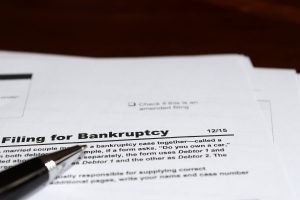 Debt is overwhelming, to say the least. And when you have debt on a wide variety of credit cards or have a significant amount of outgoings, you need to tackle debt with the right approach. While there are many debt payoff methods, let’s highlight some of the best approaches so you can improve your credit score and feel you are finally tackling that financial weight over your head.
Debt is overwhelming, to say the least. And when you have debt on a wide variety of credit cards or have a significant amount of outgoings, you need to tackle debt with the right approach. While there are many debt payoff methods, let’s highlight some of the best approaches so you can improve your credit score and feel you are finally tackling that financial weight over your head.
Table of Contents
The Debt Snowball Method
The debt snowball method is about paying the debts off from the smallest balance to the largest. By making a minimum payment on every one of your accounts apart from the one with the smallest balance (where you put as much extra money as possible towards), you start to pay off your smallest quicker. Gradually, you continue to pay off the smallest debt each time until all of the debts are paid. It’s a very good way to motivate you.
The Debt Avalanche Method
The debt avalanche approach is similar to the debt snowball. You make the minimum payment on every account but you put as much money as possible towards the account with the highest interest rate. Once you pay off the debt of the highest interest rate, you progress onto the account with the next highest interest rate and continue until every one is paid off.
Debt Settlement
This is an approach that helps for people who are past due on their payments and can afford to make one large settlement payment. This approach consists of negotiating with the creditor so they will accept a partial payment rather than the full balance. You might be eligible if you’ve suffered hardships such as losing your job. But some creditors will allow you to do this even if you don’t have these circumstances. It’s possible to hire a professional debt settlement company to do this for you. But many out there work in different ways. The Debt to Success System works to help you pay off your debt through becoming a “private banker” of sorts and you discharge the debts under your legal name. You can find some DTSS.us reviews to see if this is suitable for you.
Bankruptcy

Bankruptcy should be a last ditch attempt. If you have tried everything and it doesn’t work, bankruptcy can help, but you have to be aware that it can completely eradicate any good credit score you may have. Bankruptcy can be a long process and it’s something that shouldn’t be taken lightly. The two types of personal bankruptcy are Chapter 7 and Chapter 13 bankruptcy. Chapter 7 means you have to surrender some of your property and Chapter 13 will allow you to keep your home. And while bankruptcy can wipe the slate clean, there is no guarantee that all of your debts will be wiped. It all depends on the individual.
Debt can cripple us in an emotional sense. Using any of these strategies can hopefully free you from debt. But it’s important to remember that whatever financial problems you are going through, there are methods everyone can use. It’s also important to remember the lessons from excessive spending.